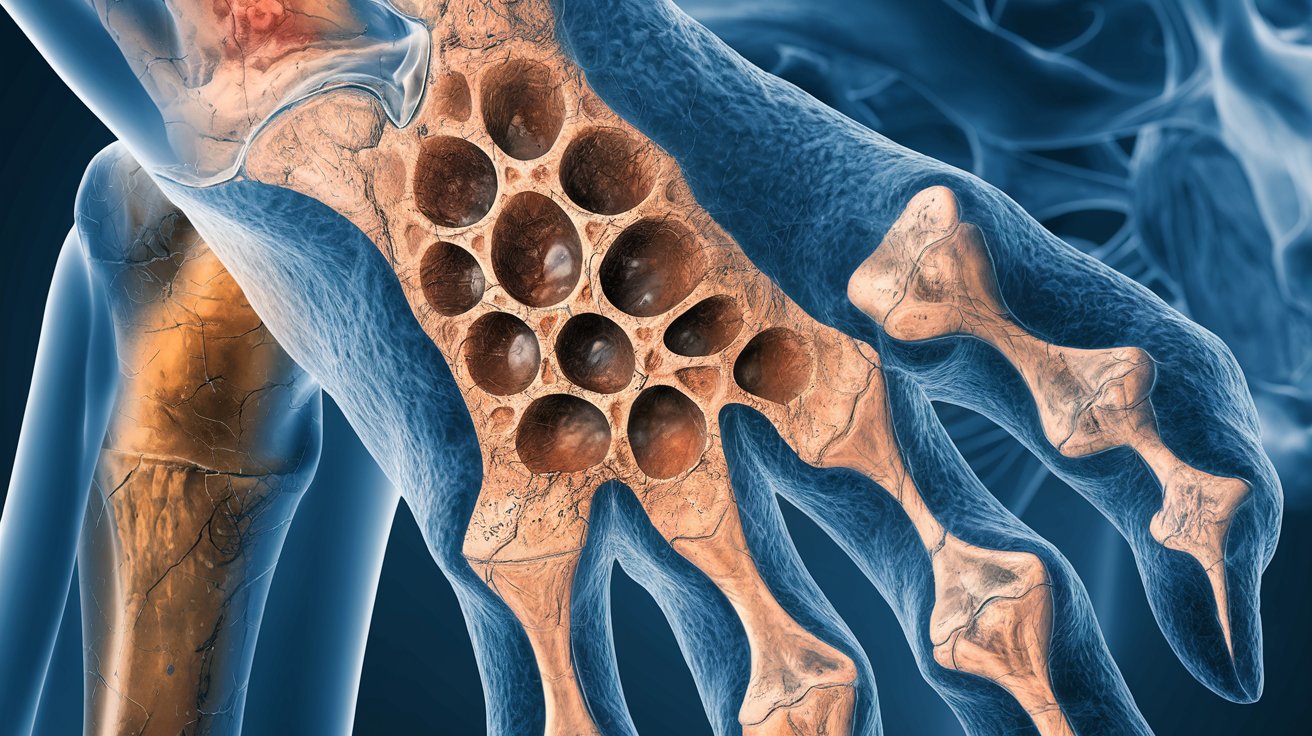
Osteolysis Recessive is a rare genetic disorder that causes bones to break down and dissolve. This condition affects the body's ability to maintain healthy bone tissue, leading to severe skeletal problems. Symptoms often include bone pain, fractures, and deformities. Diagnosis typically involves genetic testing and imaging studies to identify bone loss. Treatment options are limited but may include medications to strengthen bones, physical therapy, and sometimes surgery. Understanding this condition is crucial for those affected and their families. Here are 25 facts to help you grasp the complexities of Osteolysis Recessive.
Key Takeaways:
- Osteolysis Recessive is a rare genetic disorder causing bone destruction and deformities, often appearing in early childhood. Early diagnosis and management are crucial for improving quality of life.
- While there is no cure for Osteolysis Recessive, treatments like pain management, physical therapy, and surgical interventions can help manage symptoms and improve mobility. Research is ongoing to develop more effective treatments.
What is Osteolysis Recessive?
Osteolysis Recessive is a rare genetic disorder characterized by the progressive destruction of bone tissue. This condition can lead to severe skeletal deformities and other complications. Here are some fascinating facts about this condition.
-
Genetic Origin: Osteolysis Recessive is inherited in an autosomal recessive pattern, meaning both parents must carry the defective gene for their child to be affected.
-
Bone Destruction: The primary feature of this disorder is the breakdown of bone tissue, which can lead to significant skeletal abnormalities.
-
Early Onset: Symptoms often appear in early childhood, sometimes even in infancy, making early diagnosis crucial for management.
-
Joint Issues: Patients frequently experience joint pain and swelling due to the progressive nature of bone destruction.
-
Skull Involvement: The skull bones can be affected, leading to facial deformities and other complications.
Symptoms and Diagnosis
Understanding the symptoms and how Osteolysis Recessive is diagnosed can help in managing the condition effectively.
-
Pain and Swelling: One of the earliest signs is pain and swelling in the affected bones and joints.
-
Fractures: Due to weakened bones, individuals are more prone to fractures, even with minor trauma.
-
Growth Delays: Children with this condition often experience delayed growth and development.
-
Radiographic Findings: X-rays and other imaging techniques reveal the extent of bone destruction and help in diagnosing the condition.
-
Genetic Testing: Confirmatory diagnosis is usually made through genetic testing to identify the specific mutations involved.
Treatment Options
While there is no cure for Osteolysis Recessive, various treatments can help manage symptoms and improve quality of life.
-
Pain Management: Medications like NSAIDs are commonly used to manage pain and inflammation.
-
Physical Therapy: Regular physical therapy can help maintain joint function and mobility.
-
Surgical Interventions: In severe cases, surgical procedures may be necessary to stabilize bones and joints.
-
Bone Grafts: Bone grafting can sometimes be used to replace lost bone tissue.
-
Bisphosphonates: These drugs can help slow down bone resorption and are sometimes used in treatment plans.
Complications and Prognosis
Understanding potential complications and the overall prognosis can help in planning long-term care.
-
Mobility Issues: Progressive bone loss can lead to significant mobility issues, requiring assistive devices.
-
Hearing Loss: If the bones in the ear are affected, hearing loss can occur.
-
Dental Problems: Jawbone involvement can lead to dental issues, including tooth loss.
-
Respiratory Issues: Severe cases may involve the ribcage, leading to respiratory complications.
-
Life Expectancy: With proper management, individuals can lead relatively normal lives, although severe cases may have a reduced life expectancy.
Research and Future Directions
Ongoing research aims to better understand Osteolysis Recessive and develop more effective treatments.
-
Gene Therapy: Researchers are exploring gene therapy as a potential treatment option.
-
Stem Cell Research: Stem cell therapy holds promise for regenerating lost bone tissue.
-
Clinical Trials: Various clinical trials are underway to test new medications and treatment approaches.
-
Patient Registries: International patient registries help in collecting data and improving understanding of the condition.
-
Awareness Campaigns: Increased awareness and education can lead to earlier diagnosis and better management of Osteolysis Recessive.
Final Thoughts on Osteolysis Recessive
Osteolysis Recessive, though rare, has significant impacts on those affected. Understanding its causes, symptoms, and treatments can help manage the condition better. Genetic mutations play a big role, leading to bone loss and other complications. Early diagnosis and intervention are crucial for improving quality of life. Treatments focus on managing symptoms and slowing disease progression. Research continues to seek better solutions. Awareness and education about Osteolysis Recessive can lead to earlier detection and better support for patients. By staying informed, we can contribute to a more supportive environment for those dealing with this challenging condition. Remember, knowledge is power, and being aware of such rare conditions can make a difference in the lives of many.
Frequently Asked Questions
Was this page helpful?
Our commitment to delivering trustworthy and engaging content is at the heart of what we do. Each fact on our site is contributed by real users like you, bringing a wealth of diverse insights and information. To ensure the highest standards of accuracy and reliability, our dedicated editors meticulously review each submission. This process guarantees that the facts we share are not only fascinating but also credible. Trust in our commitment to quality and authenticity as you explore and learn with us.
